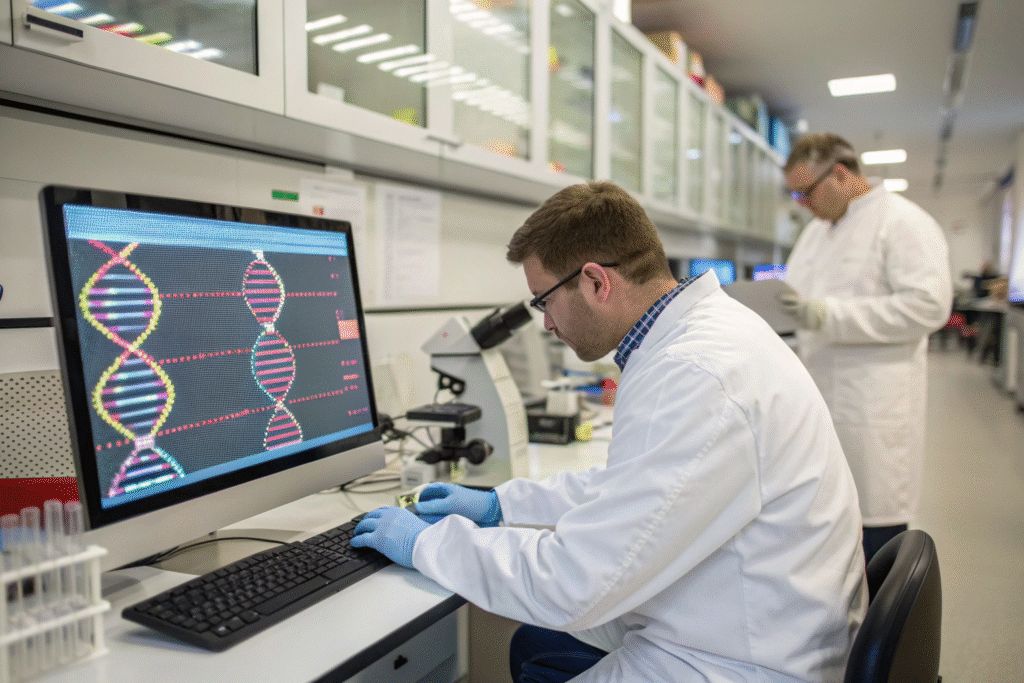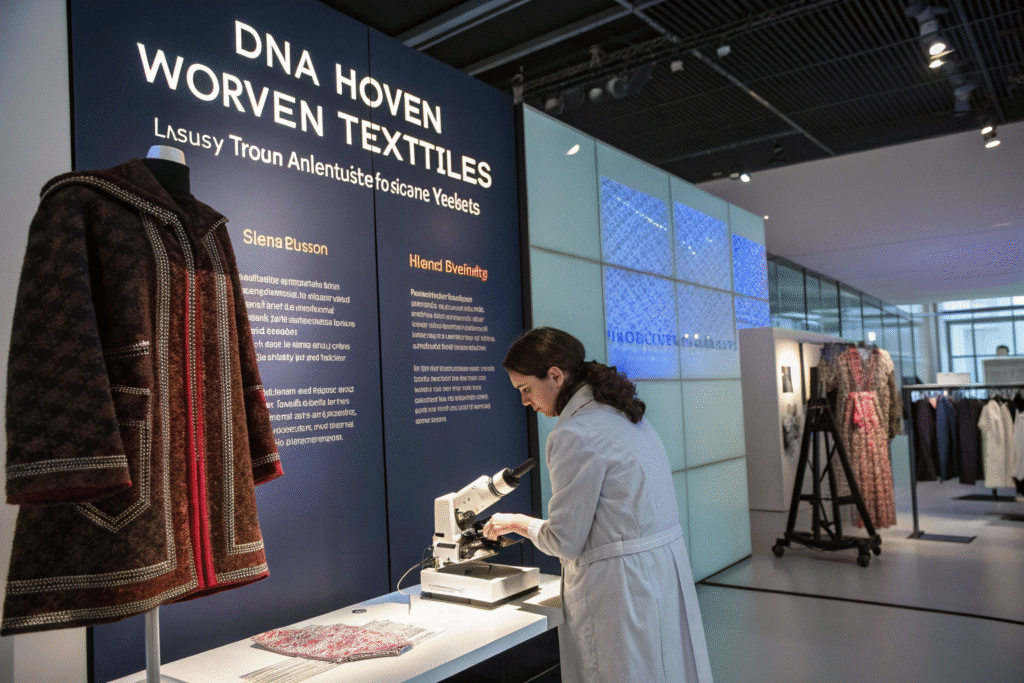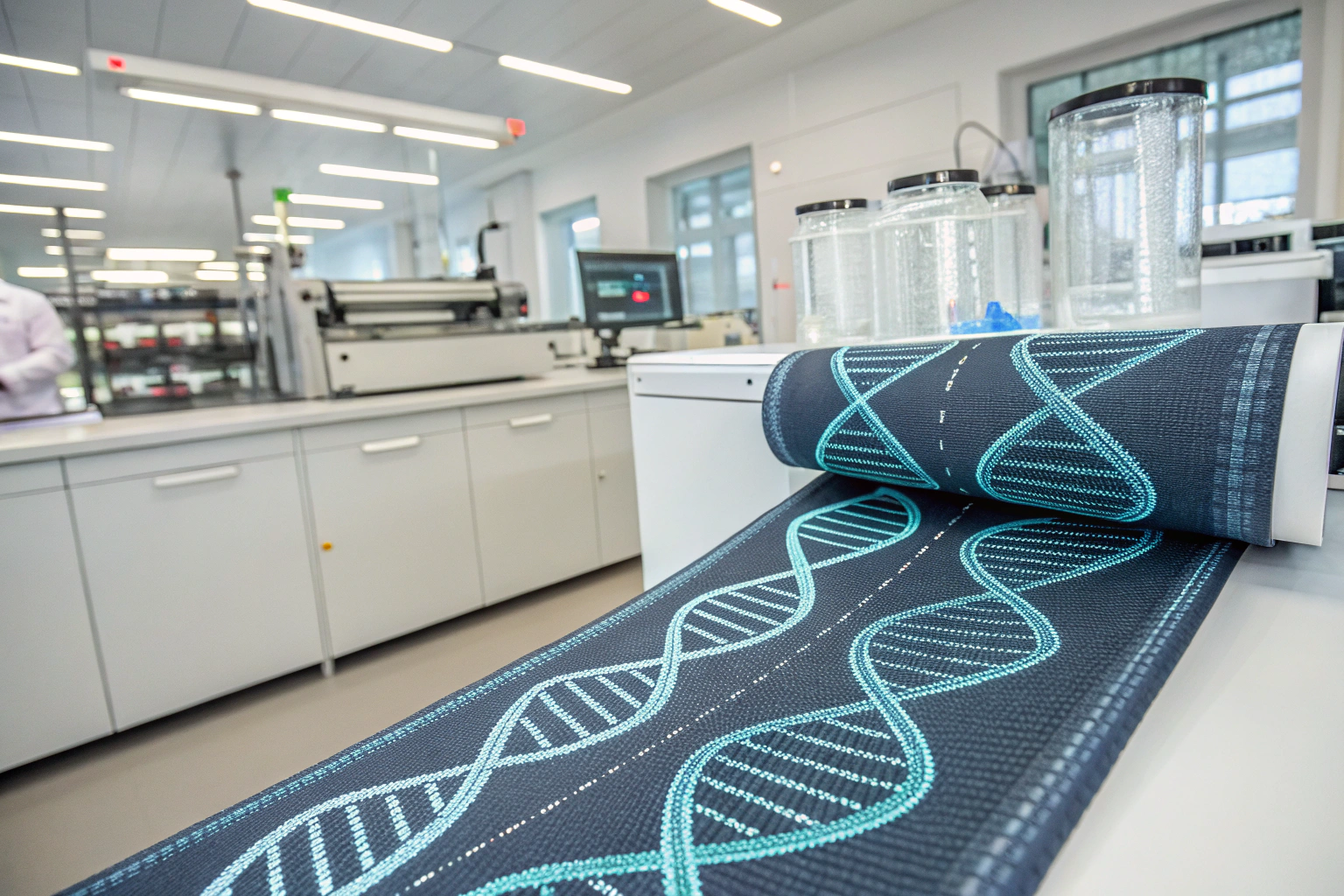The world is drowning in data, yet existing storage technologies face limits in capacity, durability, and sustainability. For the textile industry, this opens a provocative question: can fabrics themselves serve as data carriers? Researchers are now weaving the potential of DNA-based data storage into fibers, creating textiles that not only clothe or protect us but also archive digital information for centuries.
DNA data storage woven textiles combine the molecular density of DNA with the flexibility of fibers. By encoding binary data into synthetic DNA strands, embedding them into polymers, and spinning these into fibers, fabrics can become active information systems. Although still experimental, these breakthroughs redefine how we think about clothing, archives, and supply chains.
This article explores the latest advances, recent projects, applications, and challenges.
How Does DNA Data Storage Work in Textiles?
DNA storage textiles rely on the extraordinary density of DNA encoding. One gram of DNA can theoretically hold up to 215 petabytes of data.
Digital files are translated into DNA base sequences (A, T, C, G), synthesized into strands, encapsulated for protection, and integrated into fibers. Later, DNA can be extracted and sequenced to retrieve the original data.

What Techniques Enable Integration?
- Electrospinning: Creates nanofibers embedding DNA in polymers like PVA or PCL.
- Encapsulation: Uses protective frameworks (e.g., metal-organic shells) to shield DNA.
- Surface Coatings: Applies DNA tags to textiles for traceability.
One notable study demonstrated DNA-polymer composite fibers capable of storing retrievable messages, produced by electrospinning and melt-electrowriting (ScienceDirect).
Why Is This Revolutionary?
Unlike printed QR codes or RFID chips, DNA storage is nearly invisible, extremely compact, and resilient across centuries—ideal for textiles that must endure use and washing.
What Are the Latest Global Projects?
Multiple international projects are pushing the frontier of DNA-storage textiles.
TextaDNA, a European initiative, develops eco-friendly processes for embedding DNA into textile fibers, aiming at both data storage and sustainability (TextaDNA).

Recent Breakthroughs
- Composite Fibers: Spanish researchers demonstrated DNA embedded in polymer fibers with successful message retrieval (X-Mol summary).
- Traceability DNA Tags: DNACotton applies unique DNA markers for supply chain verification, particularly in sustainable cotton products (ISC3).
- DNA Cassette Tape Film: Chinese scientists created a polyester-nylon flexible tape embedding DNA, with potential to hold hundreds of petabytes per kilometer (Tom’s Hardware).
Why Do These Matter?
They demonstrate progress from identity-level tagging toward full archival storage in fabrics, bridging science fiction with applied textile science.
What Are the Applications of DNA Woven Textiles?
While DNA fabrics are experimental, the emerging use cases are highly practical.
DNA woven textiles can transform fashion traceability, luxury authentication, museum archiving, and even space travel.

Where Could They Be Applied?
- Luxury Fashion: DNA markers hidden in fibers ensure authenticity of premium products.
- Sustainable Supply Chains: Cotton or wool tagged with DNA identifiers enable transparent sourcing.
- Archival Preservation: Museums could encode historical records directly into protective fabrics.
- Space Exploration: Lightweight fabrics storing mission-critical data for deep-space missions.
For example, the DNA Cassette Tape prototype shows how petabyte-scale storage can fit into flexible film structures, suggesting textiles could one day carry entire digital libraries.
Why Textiles?
Textiles are ubiquitous—clothing, interiors, industrial fabrics. By embedding DNA, we transform them into wearable, washable data archives.
What Challenges Remain?
Despite the excitement, technical barriers must be overcome before DNA fabrics reach markets.
DNA synthesis is slow and costly, sequencing requires labs, and textile durability (washing, abrasion, UV) poses risks. Without solving these, DNA storage textiles remain laboratory concepts.

Current Barriers
- Cost: Writing DNA remains thousands of dollars per MB.
- Durability: Embedded DNA may degrade under washing or wear.
- Readout Speed: Retrieval still relies on lab-grade sequencing.
- Scalability: No industrial process yet for weaving DNA-rich fibers at scale.
Future Opportunities
- Protective encapsulation (e.g., zeolitic imidazolate frameworks)
- Hybrid fabrics that store identifiers instead of large files
- Collaboration between biotech labs and textile factories
- Standardization of DNA-fabric testing protocols
These steps will bring DNA woven textiles closer to real-world use.
Conclusion
DNA data storage woven textiles merge biotechnology with textile innovation. They promise fabrics that can store information invisibly, preserve it for centuries, and function as wearable archives. While current projects—like TextaDNA, DNA composite fibers, and DNA cassette tape films—are still proofs of concept, they point to a future where every fabric may carry both memory and meaning.
For now, practical uses include traceability and authentication. In the long term, these textiles could revolutionize both fashion and information technology, becoming the material of choice for a data-driven future.










